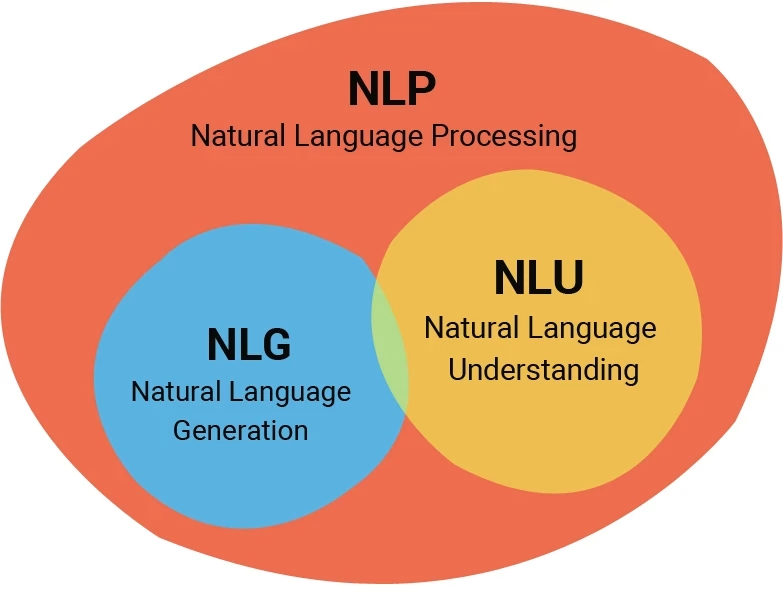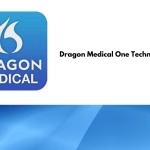The integration of Nuance’s advanced Natural Language Understanding (NLU) capabilities into Microsoft’s product ecosystem represents a paradigm shift in how humans interact with technology. This sophisticated fusion combines decades of linguistic expertise with cutting-edge artificial intelligence to create intuitive, context-aware interfaces that understand not just what users say, but what they truly mean. The result is a new generation of Microsoft products that can comprehend complex human communication patterns, interpret nuanced requests, and respond with remarkable accuracy and relevance.
Natural Language Understanding goes far beyond simple keyword recognition or basic speech-to-text conversion. It involves deep comprehension of context, intent, sentiment, and the subtle nuances that make human communication rich and complex. When nuance communications merged with Microsoft, it brought unparalleled expertise in linguistic analysis and conversational AI that now powers some of the most advanced NLU implementations in enterprise software.
This technological evolution is transforming how organizations interact with their digital tools, enabling more natural, efficient, and productive workflows across industries. From healthcare documentation to business analytics, the integration of advanced NLU capabilities is redefining the boundaries of human-computer interaction.
Understanding Natural Language Understanding Technology
Natural Language Understanding represents one of the most complex challenges in artificial intelligence, requiring systems to parse, interpret, and comprehend human language in all its complexity and ambiguity. Unlike simple pattern matching or keyword detection, true NLU involves multiple layers of analysis that work together to extract meaning from human communication.
Core Components of Advanced NLU Systems
Modern NLU systems integrate several sophisticated technologies to achieve human-like comprehension:
- Semantic Analysis: Understanding the meaning of words within their specific context
- Syntactic Parsing: Analyzing grammatical structure and relationships between words
- Pragmatic Interpretation: Comprehending implied meaning and conversational context
- Discourse Analysis: Understanding communication flow across multiple exchanges
- Intent Recognition: Identifying the underlying purpose behind user requests
- Entity Extraction: Recognizing and categorizing specific information within text or speech
These components work synergistically to create systems that can handle the ambiguity, idioms, and contextual variations that characterize natural human communication.
Machine Learning and Deep Learning Implementation
The effectiveness of modern NLU systems relies heavily on advanced machine learning algorithms, particularly deep neural networks that can process vast amounts of linguistic data to identify patterns and relationships.
Key technological approaches include:
- Transformer architectures: Advanced neural networks that excel at understanding context and relationships
- Large language models: Pre-trained systems that understand linguistic patterns across diverse domains
- Transfer learning: Adapting general language models for specific applications and industries
- Continuous learning: Systems that improve through interaction and feedback
- Multilingual processing: Understanding and translating across different languages and dialects
Microsoft’s NLU Integration Strategy
Microsoft’s approach to integrating Nuance’s NLU capabilities demonstrates a comprehensive strategy that enhances user experience across the entire product ecosystem. This integration goes beyond surface-level features to create fundamental improvements in how users interact with technology.
Azure Cognitive Services Enhancement
The nuance cloud integration with Azure Cognitive Services has significantly enhanced Microsoft’s AI platform capabilities. This enhancement provides developers and organizations with access to enterprise-grade NLU services that can be integrated into custom applications and workflows.
Enhanced capabilities include:
- Advanced speech recognition with contextual understanding
- Real-time language translation with preserved meaning and tone
- Sentiment analysis and emotional intelligence recognition
- Custom model training for industry-specific terminology
- Multi-modal input processing combining voice, text, and visual data
These services enable organizations to build intelligent applications that understand user intent and respond appropriately, regardless of how requests are phrased or expressed.
Microsoft 365 Productivity Suite Integration
The integration of advanced NLU capabilities into Microsoft 365 has transformed productivity applications from passive tools into intelligent assistants that understand user intent and provide contextually relevant support.
Key enhancements across the suite include:
- Outlook: Intelligent email composition assistance and automated response suggestions
- Teams: Real-time meeting transcription with action item extraction
- Word: Context-aware writing assistance and document analysis
- PowerPoint: Automated slide generation based on natural language descriptions
- Excel: Natural language querying of data and automated insight generation
These improvements enable users to interact with productivity tools using natural language, reducing the learning curve and increasing efficiency across diverse workflows.
Healthcare Applications and Clinical Intelligence
Healthcare represents one of the most significant beneficiaries of advanced NLU integration in Microsoft products. The combination of medical expertise from Nuance with Microsoft’s cloud infrastructure has created unprecedented opportunities for clinical intelligence and healthcare automation.
Clinical Documentation Revolution
The integration of NLU technology into healthcare workflows has fundamentally transformed clinical documentation processes. Healthcare providers can now interact with electronic health records using natural speech, dramatically reducing administrative burden.
Clinical documentation improvements include:
- Ambient listening technology that captures patient encounters automatically
- Real-time transcription with medical terminology recognition
- Automated clinical note generation with proper formatting and structure
- Integration with major EHR systems for seamless workflow incorporation
- Quality assurance and compliance checking for documentation accuracy
According to HIMSS (Healthcare Information and Management Systems Society), these NLU-powered documentation solutions can reduce physician documentation time by up to 70%, allowing healthcare providers to focus more attention on patient care.
Diagnostic Support and Clinical Decision Making
Advanced NLU capabilities enable Microsoft healthcare solutions to provide intelligent diagnostic support by analyzing clinical conversations, patient histories, and medical literature to identify relevant insights and recommendations.
Diagnostic support features include:
- Real-time analysis of patient-provider conversations for diagnostic clues
- Evidence-based treatment recommendations based on current medical literature
- Drug interaction and allergy checking with natural language queries
- Risk stratification based on conversational assessment data
- Population health insights derived from aggregated clinical interactions
Patient Engagement and Communication
NLU technology enhances patient engagement through more natural and intuitive interfaces for healthcare interactions, making healthcare technology more accessible to diverse patient populations.
Patient engagement improvements include:
- Natural language interfaces for appointment scheduling and healthcare inquiries
- Conversational health assessments and symptom checking
- Medication management with voice-activated reminders and instructions
- Patient education delivery through conversational interfaces
- Multilingual support for diverse patient populations
Business Intelligence and Analytics Enhancement
The integration of NLU capabilities into Microsoft’s business intelligence platforms has created new opportunities for organizations to extract insights from unstructured data and interact with analytics tools using natural language.
Power BI Natural Language Querying
Power BI’s integration with advanced NLU technology enables users to query complex datasets using natural language, democratizing data access across organizations regardless of technical expertise.
Natural language querying features include:
- Conversational data exploration with follow-up questions
- Automatic visualization generation based on natural language requests
- Context-aware suggestions for related analyses and insights
- Integration with paperport for windows 11 systems for document-based analytics
- Real-time collaboration through natural language dashboard sharing
Automated Insight Generation
Advanced NLU systems can analyze business communications, documents, and data to automatically generate insights and identify trends that might not be immediately apparent to human analysts.
Automated insight capabilities include:
- Email and communication analysis for customer sentiment trends
- Document analysis for regulatory compliance and risk assessment
- Meeting transcription analysis for action item and decision tracking
- Social media and customer feedback analysis for brand intelligence
- Competitive intelligence gathering from public communications and reports
Customer Service and Support Transformation
The integration of advanced NLU capabilities into Microsoft’s customer service platforms has revolutionized how organizations interact with customers, providing more natural, efficient, and satisfying support experiences.
Conversational AI and Chatbot Enhancement
Modern customer service chatbots powered by advanced NLU can understand complex customer requests, maintain context across multiple interactions, and provide personalized responses that feel natural and helpful.
Conversational AI improvements include:
- Multi-turn conversation handling with context preservation
- Emotional intelligence and sentiment-aware responses
- Seamless escalation to human agents when appropriate
- Integration with knowledge bases and documentation systems
- Personalization based on customer history and preferences
Voice-Enabled Customer Support
Voice-powered customer support systems leverage NLU technology to understand customer inquiries regardless of accent, speaking style, or technical terminology usage.
Voice support enhancements include:
- Real-time intent recognition during customer calls
- Automated call routing based on conversation content
- Agent assistance with real-time suggestions and information
- Call summarization and action item extraction
- Quality monitoring and coaching based on conversation analysis
Developer Tools and Platform Integration
Microsoft has made advanced NLU capabilities accessible to developers through comprehensive APIs, SDKs, and development tools that enable custom application development with enterprise-grade language understanding.
Cognitive Services APIs and SDKs
The platform provides extensive developer resources for integrating NLU capabilities into custom applications:
- RESTful APIs for various NLU services and capabilities
- SDKs for popular programming languages and development frameworks
- Pre-trained models for common use cases and industries
- Custom model training tools for specialized applications
- Real-time processing capabilities for interactive applications
Bot Framework Integration
Microsoft’s Bot Framework, enhanced with advanced NLU capabilities, enables developers to create sophisticated conversational applications that can understand and respond to natural language input.
Bot Framework enhancements include:
- Advanced dialog management with context awareness
- Multi-channel deployment across various communication platforms
- Integration with existing business systems and databases
- Analytics and performance monitoring for continuous improvement
- Enterprise-grade security and compliance features
Industry-Specific Applications and Customization
Different industries have unique linguistic requirements and domain-specific terminology that advanced NLU systems must accommodate to provide effective solutions.
Legal and Professional Services
Legal organizations require NLU systems that understand complex legal terminology, document structures, and regulatory language patterns.
Legal industry applications include:
- Contract analysis and risk assessment through natural language processing
- Legal research assistance with case law and statute analysis
- Document review automation for litigation and compliance
- Client communication analysis for service quality improvement
- Regulatory compliance monitoring through document analysis
Financial Services and Banking
Financial institutions leverage NLU technology for risk management, customer service, and regulatory compliance across various applications.
Financial services applications include:
- Fraud detection through communication pattern analysis
- Customer service automation for banking and investment inquiries
- Regulatory reporting and compliance documentation
- Market sentiment analysis for investment decision support
- Credit risk assessment through application and document analysis
Manufacturing and Industrial Applications
Manufacturing organizations use NLU technology to improve operational efficiency, quality control, and maintenance processes.
Manufacturing applications include:
- Voice-activated quality control and inspection reporting
- Maintenance request processing and work order generation
- Safety incident reporting and analysis
- Supply chain communication and coordination
- Training and knowledge management through conversational interfaces
Privacy, Security, and Compliance Considerations
Enterprise NLU implementations must address comprehensive privacy and security requirements while maintaining the functionality and accuracy that users expect.
Data Protection and Privacy Standards
Advanced NLU systems process sensitive linguistic data that requires robust protection mechanisms:
- End-to-end encryption for all voice and text data transmission
- Secure data storage with access controls and audit logging
- Privacy-preserving machine learning techniques for model training
- User consent management and data usage transparency
- Data retention policies and automated deletion procedures
Regulatory Compliance Framework
Different industries and regions have specific requirements for AI and language processing systems:
- Healthcare: HIPAA compliance for medical communication processing
- Financial: SOX and banking regulations for financial communication analysis
- European: GDPR compliance for personal data processing
- Government: Security clearance requirements for government applications
- International: Cross-border data transfer regulations and local language laws
According to Gartner, organizations must establish comprehensive governance frameworks for AI systems to ensure compliance while maximizing business value.
Performance Optimization and Scalability
Enterprise NLU implementations require sophisticated performance optimization to handle large volumes of linguistic data while maintaining low latency and high accuracy.
Real-Time Processing Capabilities
Modern NLU systems must process language input in real-time to support interactive applications and live conversations:
- Edge computing deployment for reduced latency and improved privacy
- Distributed processing architectures for scalable performance
- Caching strategies for frequently requested analyses
- Load balancing across multiple processing nodes
- Performance monitoring and optimization tools
Accuracy and Quality Metrics
Organizations must establish comprehensive metrics for measuring and improving NLU system performance:
- Intent recognition accuracy across different user groups and scenarios
- Entity extraction precision and recall rates
- Response relevance and user satisfaction scores
- System uptime and reliability measurements
- Continuous learning effectiveness and model improvement rates
Future Developments and Technology Roadmap
The field of Natural Language Understanding continues evolving rapidly, with new capabilities and applications emerging regularly that will further enhance Microsoft’s product ecosystem.
Emerging Technology Integration
Future developments will expand NLU capabilities through integration with cutting-edge technologies:
- Multimodal AI: Combining language understanding with visual and audio processing
- Emotional AI: Advanced emotion recognition and empathetic response generation
- Contextual Computing: Understanding user environment and situation for better responses
- Quantum Computing: Leveraging quantum algorithms for complex linguistic analysis
- Augmented Reality: Natural language interfaces for immersive computing experiences
Market Evolution and Opportunities
The NLU market continues expanding across new industries and applications:
- Increased adoption in small and medium businesses through accessible cloud services
- Growing demand for multilingual and cross-cultural communication support
- Enhanced accessibility features for users with disabilities
- Integration with Internet of Things devices for voice-controlled environments
- Expansion into emerging markets with localized language support
Implementation Best Practices and Success Strategies
Organizations achieve optimal results from NLU implementations by following proven methodologies and avoiding common pitfalls that can limit effectiveness.
Strategic Planning and Requirements Analysis
Successful NLU implementations begin with comprehensive planning and clear understanding of business objectives:
- Detailed analysis of current communication workflows and pain points
- Clear definition of success metrics and key performance indicators
- Stakeholder engagement across technical and business teams
- Pilot program development for controlled testing and validation
- Change management planning for user adoption and training
User Experience Design and Optimization
NLU systems must provide intuitive, natural interactions that meet user expectations:
- Conversational interface design based on user research and testing
- Clear feedback mechanisms for system responses and actions
- Graceful error handling and recovery for misunderstood inputs
- Personalization capabilities that adapt to individual user preferences
- Accessibility features for diverse user populations and capabilities
Conclusion
The integration of Nuance’s advanced Natural Language Understanding capabilities into Microsoft’s product ecosystem represents a transformative leap forward in human-computer interaction. This sophisticated technology enables more natural, intuitive, and efficient workflows across industries, from healthcare documentation to business analytics and customer service.
The comprehensive approach Microsoft has taken to NLU integration—spanning Azure cloud services, Microsoft 365 productivity tools, and specialized industry applications—demonstrates the potential for language understanding technology to fundamentally improve how people work and interact with digital systems.
As organizations continue adapting to digital transformation requirements, the advanced NLU capabilities available through Microsoft products provide a competitive advantage that extends far beyond simple automation. The ability to understand context, intent, and nuance in human communication creates opportunities for innovation that were previously impossible with traditional software interfaces.
The future of productivity and business technology lies in this convergence of linguistic expertise and artificial intelligence. Organizations that embrace these advanced NLU capabilities position themselves for sustained success in an increasingly complex and competitive digital landscape, where the quality of human-computer interaction often determines the difference between technological success and failure.


